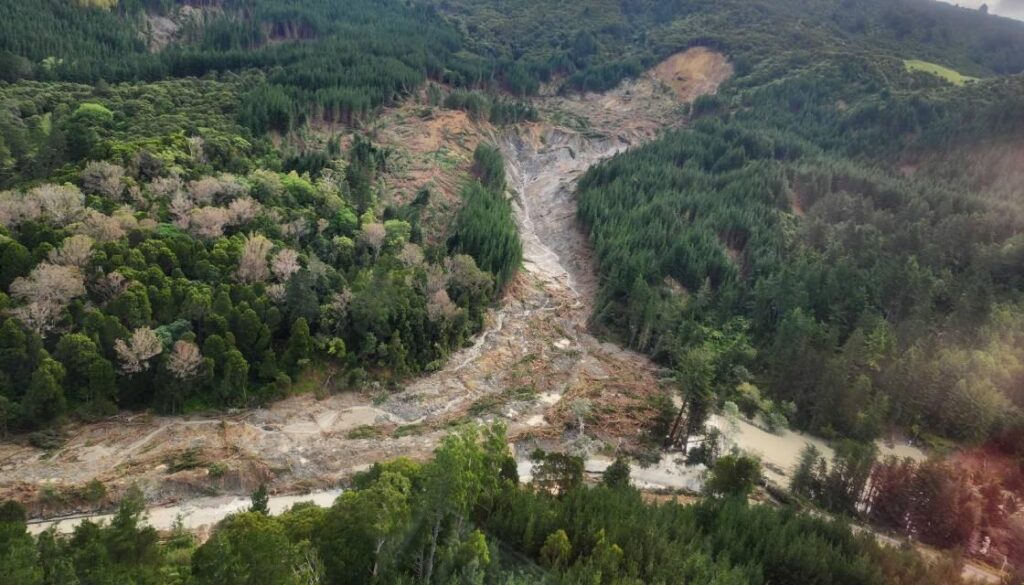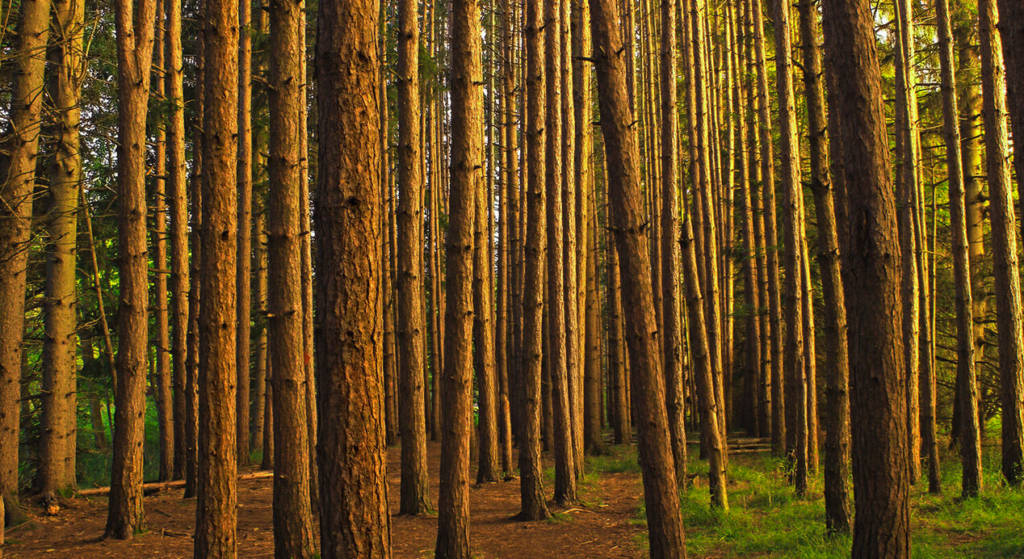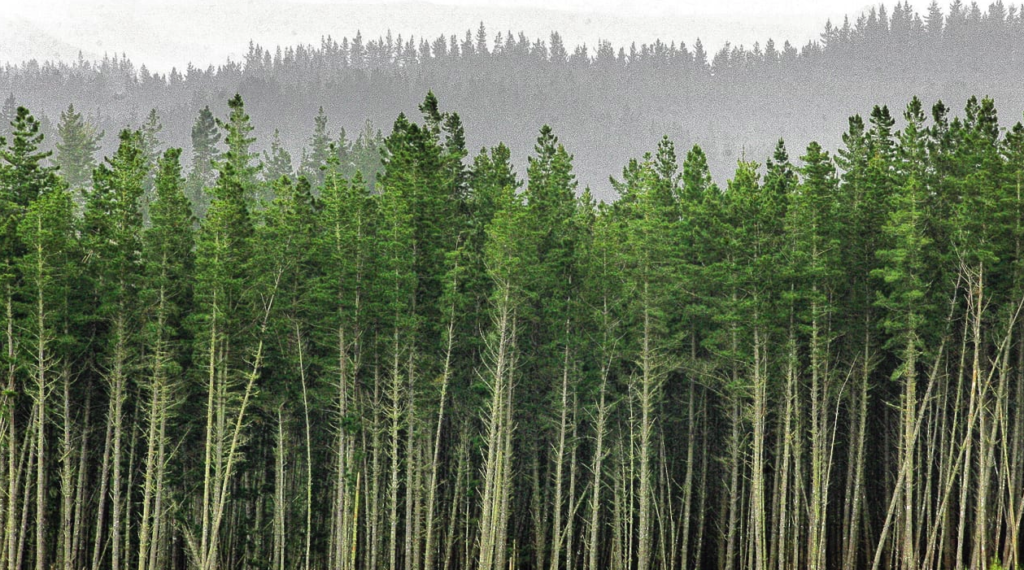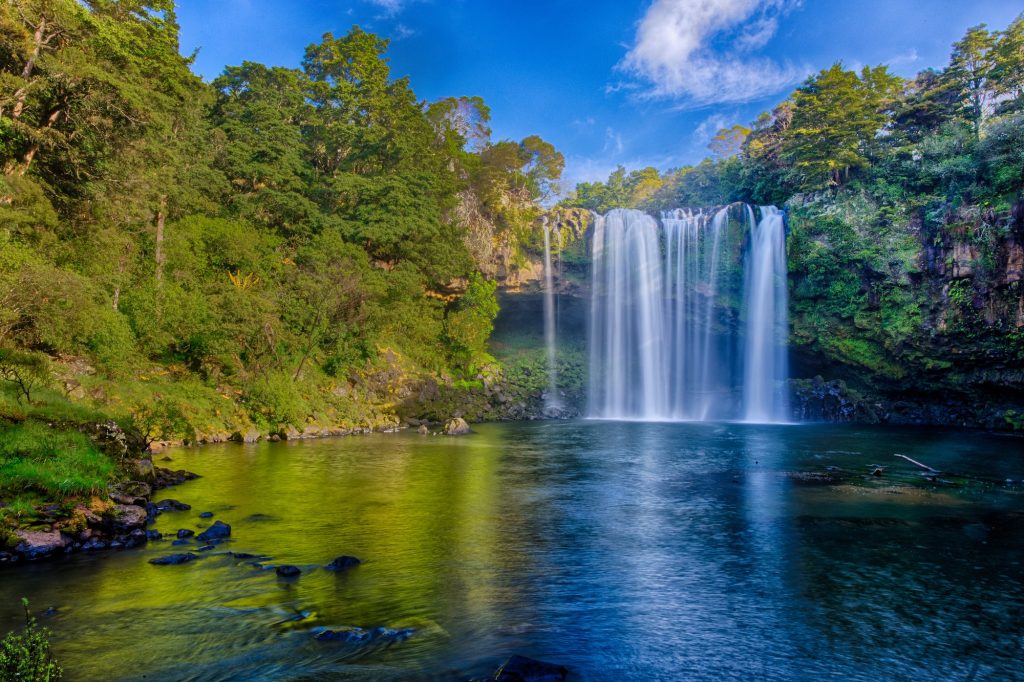The Pine Predicament: New Zealand’s Forestry Dilemma
The Downside of Pine Plantations in New Zealand
While pine plantations have been touted as a solution for carbon sequestration and economic growth in New Zealand, they come with significant environmental and economic drawbacks that are often overlooked.
Environmental Concerns
Pine plantations, primarily consisting of Pinus radiata, pose several environmental challenges:
- Biodiversity Loss: Monoculture pine forests support far less biodiversity than native forests. They provide poor habitat for New Zealand’s unique flora and fauna, many of which are already threatened or endangered.
- Soil Degradation: Pine trees acidify the soil over time, making it less suitable for other plant species and potentially impacting long-term land use.
- Water Issues: Pine plantations can significantly reduce water yield in catchments, affecting downstream water availability. During harvesting, they also contribute to increased erosion and sedimentation in waterways.
- Fire Risk: Pine forests are more susceptible to wildfires than native forests, posing increased risk in a warming climate.
- Invasive Potential: Pinus radiata can spread beyond plantation boundaries, becoming an invasive species in native ecosystems.
Pine plantations in New Zealand, while often promoted as a solution for carbon sequestration, present a myriad of environmental challenges that cannot be overlooked. The widespread cultivation of Pinus radiata, in particular, has far-reaching ecological consequences that extend beyond their intended benefits.
One of the most pressing issues is the significant loss of biodiversity associated with these monoculture forests. Unlike New Zealand’s rich and diverse native forests, pine plantations create a homogeneous environment that supports only a fraction of the country’s unique flora and fauna. Many of New Zealand’s endemic species, already under threat, find these artificial forests inhospitable. The uniform structure and composition of pine plantations fail to provide the varied habitats and food sources necessary for a thriving ecosystem.
The impact of pine plantations on soil health is another critical concern. Over time, pine trees tend to acidify the soil, altering its chemical composition. This acidification can have long-lasting effects on the land’s fertility and its ability to support diverse plant life in the future. The change in soil pH not only affects the immediate area but can also impact neighboring ecosystems as acidic runoff spreads.
Water management is significantly affected by pine plantations. These fast-growing trees consume large amounts of water, reducing the overall water yield in catchment areas. This reduction can lead to decreased water availability for downstream ecosystems and human use. Moreover, the harvesting process of pine plantations often results in increased erosion and sedimentation in waterways. The exposed soil, coupled with New Zealand’s often steep terrain, can lead to significant runoff during rainfall events, damaging aquatic ecosystems and water quality.
The increased fire risk associated with pine plantations is a growing concern, especially in the face of climate change. Pine forests, with their resinous trees and often densely packed structure, are more susceptible to wildfires than native New Zealand forests. As climate change brings more frequent and severe droughts to parts of New Zealand, the risk of catastrophic fires in these plantations rises, posing threats to both the environment and nearby communities.
Lastly, the invasive potential of Pinus radiata presents an ongoing challenge. These trees can spread beyond the boundaries of plantations, encroaching on native ecosystems. Their seeds, carried by wind, can establish new trees in areas designated for conservation or regeneration of native species, complicating efforts to preserve and restore New Zealand’s unique natural landscapes.
These environmental concerns collectively paint a picture of an approach to forestry that, while beneficial in some aspects, comes with significant ecological costs. The challenge for New Zealand lies in balancing the economic and carbon sequestration benefits of forestry with the need to protect and enhance its unique natural heritage and biodiversity.

Pine Forestry Slash Destroys Infrastructure
The devastating impact of pine forestry slash on infrastructure has become increasingly apparent in New Zealand, particularly in regions like Tairāwhiti (Gisborne) and Hawke’s Bay. Recent extreme weather events have highlighted the severe consequences of poor forestry management practices and the vulnerability of infrastructure to forestry debris.
During Cyclones Hale and Gabrielle in early 2023, the damage caused by pine forestry slash was catastrophic. Critical public infrastructure was destroyed, leaving communities isolated and without essential services[3]. The destruction included:
- Roads and bridges washed away or severely damaged
- Power lines and communication networks disrupted
- Water supply systems contaminated or destroyed
- Stormwater and sewage systems overwhelmed
The mechanism of destruction is particularly alarming. When heavy rainfall occurs, landslides in harvested pine plantation sites pick up loose woody material, including large logs, left after clear-fell harvesting. This material, known as slash, is then carried downstream by floodwaters[3]. The sheer volume and size of this debris can overwhelm rivers and streams, leading to the formation of log jams that can burst suddenly, releasing destructive torrents of water, mud, and timber.
Bridges are particularly vulnerable to this onslaught. The accumulation of slash against bridge structures can cause them to fail under the immense pressure, leading to their collapse. In some cases, entire bridge spans have been swept away, severing critical transportation links for communities[1].
The damage extends beyond immediate infrastructure destruction. Highly productive agricultural and horticultural land has been washed away or buried under sediment and slash, impacting food production and local economies[3]. Houses, fences, and sheds have been knocked over by the force of debris-laden floodwaters, upending people’s lives and dreams[3].
The financial cost of this destruction is staggering. Local and national governments face enormous bills for repairing and rebuilding essential infrastructure. For example, after the June 2018 storm in Tolaga Bay, the cost of repairing roads alone was estimated at millions of dollars[1].
Moreover, the repeated nature of these events is particularly concerning. Similar damage occurred during storms in June 2018 and July 2020, indicating a persistent and unresolved issue with forestry management practices[3]. The frequency of these disasters is expected to increase with climate change, potentially leading to more severe and frequent infrastructure damage if current forestry practices continue unchecked[3].
The destruction of infrastructure by pine forestry slash not only has immediate economic impacts but also long-term consequences for community resilience and regional development. It underscores the urgent need for a comprehensive reassessment of forestry practices, particularly in vulnerable areas, to protect vital infrastructure and the communities that depend on it.
Citations:
[1] https://kathmandupost.com/climate-environment/2019/12/21/we-have-too-many-pines-and-it-s-not-a-good-thing
[2] https://pureadvantage.org/radiata-pine-plantations-a-band-aid-to-nowhere/
[3] https://www.canterbury.ac.nz/news-and-events/news/devastating-consequences-from-planting-pine-after-cyclone-bola
[4] https://www.rnz.co.nz/news/political/522380/you-can-t-plant-your-way-out-of-this-problem-worry-at-government-s-pine-heavy-carbon-plan
[5] https://eds.org.nz/resources/documents/media-releases/2021/carbon-farming-with-pines-bad-for-the-environment/

Economic Drawbacks for New Zealanders
While pine plantations contribute to New Zealand’s economy, the benefits are not always realized by local communities:
- Export-Oriented Industry: A large portion of harvested pine is exported as raw logs, meaning New Zealand misses out on the added value of processing.
- Limited Local Employment: Modern forestry operations require less labor than traditional farming, potentially reducing rural employment opportunities.
- Short-Term Carbon Storage: While pine trees sequester carbon quickly, much of this is released back into the atmosphere when the trees are harvested and processed, typically every 25-30 years.
- Land Use Changes: The conversion of agricultural land to forestry can impact rural communities and food production capacity.
- Foreign Ownership: Increasing foreign investment in New Zealand forestry means profits often flow overseas rather than benefiting local economies.
While pine plantations contribute significantly to New Zealand’s economy, the benefits are not always realized by local communities, and there are several economic drawbacks that affect New Zealanders directly.
One of the primary concerns is the export-oriented nature of the pine industry. A large portion of harvested pine is exported as raw logs, primarily to countries like China. This means New Zealand misses out on the added value that could be gained from processing these logs domestically. The country essentially exports jobs and economic opportunities along with its raw timber. This practice limits the potential for developing a robust, value-added timber processing industry within New Zealand that could provide more jobs and economic benefits to local communities.
The modern forestry industry, with its focus on efficiency and mechanization, requires less labor than traditional farming or other land uses. This shift has led to limited local employment opportunities, particularly in rural areas where job options are already scarce. As large-scale pine plantations replace other forms of land use, rural communities may experience a decline in population and economic activity, further exacerbating regional inequalities.
From a carbon perspective, while pine trees do sequester carbon quickly in their early years, much of this carbon is released back into the atmosphere when the trees are harvested and processed, typically every 25-30 years. This short-term carbon storage doesn’t provide the long-term climate benefits that many New Zealanders might expect from forestry initiatives.
The conversion of agricultural land to forestry can have significant impacts on rural communities and New Zealand’s food production capacity. As more land is dedicated to pine plantations, there’s a risk of reducing the country’s agricultural output, which has long been a cornerstone of the New Zealand economy. This shift could affect food security and export earnings from the agricultural sector.
Another concerning trend is the increasing foreign investment in New Zealand forestry. While foreign investment can bring capital into the country, it often means that profits from these forestry operations flow overseas rather than benefiting local economies. This outflow of profits reduces the economic benefits that New Zealanders might otherwise derive from their natural resources.
The New Zealand Emissions Trading Scheme (ETS) has inadvertently created a situation where “carbon farming” with pine plantations is incentivized. While this appears beneficial for meeting short-term climate goals, it creates several economic issues. It encourages the conversion of productive agricultural land to permanent pine forests, potentially locking land into a single use for generations. This could create future economic liabilities when these forests reach maturity and stop sequestering additional carbon, potentially leaving New Zealand with less flexible land use options in the face of changing economic needs.
Furthermore, the focus on pine plantations may be displacing investment in native forest regeneration, which could provide superior long-term ecological and potentially economic benefits through sustainable eco-tourism and biodiversity conservation.
In conclusion, while pine plantations do contribute to New Zealand’s economy, the structure of the industry and its impacts mean that many of the potential benefits are not being fully realized by New Zealanders. Instead, the country faces risks to its rural communities, agricultural sector, and long-term land use flexibility. A more balanced approach that considers a wider range of economic factors and prioritizes local benefit could help address these drawbacks and create a more sustainable and beneficial forestry sector for all New Zealanders.
Citations:
[1] https://www.beehive.govt.nz/sites/default/files/2019-09/Economic%20Plan.pdf
[2] https://www.oecd.org/en/topics/sub-issues/economic-surveys/new-zealand-economic-snapshot.html
[3] https://www.buildingabetterfuture.org.nz/the_challenges_facing_the_new_zealand_economy
[4] https://www.infometrics.co.nz/article/2023-06-nz-economy-out-of-balance
[5] https://www.rnz.co.nz/news/political/492045/recession-a-red-light-warning-for-incredibly-fragile-economy-national

The Carbon Farming Dilemma
The New Zealand Emissions Trading Scheme has incentivized “carbon farming” with pine plantations. While this appears beneficial for meeting short-term climate goals, it creates several issues:
- It encourages the conversion of productive agricultural land to permanent pine forests.
- It potentially displaces native forest regeneration, which would provide superior long-term carbon storage and biodiversity benefits.
- It may create a future liability when these forests reach maturity and stop sequestering additional carbon.
Carbon farming, which involves adopting agricultural practices that enhance the uptake and storage of carbon in the soil, has been heralded as a potential solution to the climate crisis. However, this approach is fraught with complexities and challenges that raise questions about its long-term viability and effectiveness. Dr. Jim Salinger and other experts have highlighted several key issues that need to be addressed for carbon farming to be a truly sustainable and beneficial practice.
One of the primary concerns with carbon farming is the issue of non-permanence. The carbon sequestered in soil through regenerative practices can be easily reversed if the land management practices are not maintained consistently. For instance, if a farmer decides to revert to conventional farming methods or if the land is disturbed, the stored carbon can be released back into the atmosphere. This reversibility undermines the long-term benefits of carbon farming and makes it a less reliable solution for permanent CO2 removal.
Another significant challenge is the measurement and verification of soil carbon. The carbon content in soil is unevenly distributed, and accurately measuring it can be a complex and costly process. The scientific community demands a high degree of accuracy for trading purposes, which can be prohibitively expensive for farmers. This high cost of measurement can outweigh the potential financial benefits from carbon credits, particularly during the initial periods when farmers are transitioning to carbon farming practices.
The issue of inclusiveness also poses a dilemma. Large-scale conventional farmers are often the ones who can afford to participate in carbon credit schemes, potentially leaving small-scale and indigenous farmers at a disadvantage. These smaller farmers, who have often been practicing regenerative farming methods for generations, may struggle to meet the stringent requirements for carbon credits. This disparity can exacerbate existing inequalities in the agricultural sector, allowing wealthier farmers to gain more benefits while smaller farmers are left behind.
The “Additionality” requirement is another barrier that complicates the implementation of carbon farming. This principle mandates that only new practices that go beyond “business as usual” can qualify for carbon credits. As a result, progressive farmers who have already adopted sustainable practices may be excluded from earning offsets, while those who have been slower to adopt such practices are rewarded. This creates a perverse incentive structure that penalizes early adopters and discourages widespread adoption of regenerative practices.
The economic implications of carbon farming also extend to the broader agricultural landscape. The conversion of productive agricultural land to carbon farming can impact food production and rural economies. As more land is dedicated to carbon sequestration, there is a risk of reducing the country’s agricultural output, which has long been a cornerstone of New Zealand’s economy. This shift could affect food security and export earnings from the agricultural sector, posing a dilemma for policymakers who must balance environmental goals with economic realities.
Moreover, the focus on carbon farming can lead to a lock-in effect, where land use is essentially fixed for decades. This permanence requirement, often mandated by carbon credit schemes, means that land dedicated to carbon farming cannot be easily repurposed for other uses. This rigidity can limit the flexibility of land management practices and may not align with future economic or environmental needs.
Despite these challenges, carbon farming does offer several potential benefits. It can help restore soil quality, enhance crop production, reduce pollution, and preserve water bodies. By enriching the soil with compost and other organic matter, carbon farming can improve the resilience of agricultural systems and support sustainable food production. Additionally, the ability to earn carbon credits provides a financial incentive for farmers to adopt regenerative practices, potentially making agriculture more sustainable in the long run.
To address the carbon farming dilemma, several steps can be taken. Policymakers need to develop more inclusive strategies that support small-scale and indigenous farmers, ensuring they can benefit from carbon credits. The measurement and verification processes should be streamlined and made more cost-effective to encourage broader participation. Additionally, the “Additionality” requirement should be re-evaluated to avoid penalizing early adopters of sustainable practices.
In conclusion, while carbon farming presents a promising approach to mitigating climate change, it is not without its challenges. Addressing the issues of non-permanence, measurement costs, inclusiveness, and economic impacts is crucial for making carbon farming a viable and sustainable solution. By taking a balanced and informed approach, New Zealand can harness the potential of carbon farming to benefit both the environment and its agricultural sector.
Citations:
[1] https://www.linkedin.com/pulse/carbon-farming-solution-climate-crisis-carbon-mandal
[2] https://www.aph.gov.au/DocumentStore.ashx?id=4f3a31eb-e1ab-4a3d-bdca-fafa8a0fb1e2
[3] https://www.interest.co.nz/rural-news/125338/carbon-farming-presents-both-opportunities-and-threats-lots-uncertainty-and-big
[4] https://www.producer.com/opinion/food-for-thought-the-carbon-dilemma/
[5] https://www.farmersweekly.co.nz/news/nzs-land-use-dilemma-makes-headlines
A Call for Sustainable Alternatives
Given these concerns, many environmentalists and economists are calling for a shift towards more sustainable forestry practices in New Zealand:
- Encouraging native forest regeneration for long-term carbon storage and biodiversity benefits.
- Promoting diverse, mixed-species plantations that better mimic natural ecosystems.
- Developing value-added timber processing industries within New Zealand to capture more economic benefits locally.
- Implementing stricter regulations on forestry practices to minimize environmental impacts.
- Revising the Emissions Trading Scheme to better incentivize native forest restoration over pine monocultures.
By addressing these issues, New Zealand can work towards a more balanced approach that considers both environmental sustainability and long-term economic benefits for its citizens.
Given the significant environmental and economic drawbacks of pine plantations, there is a pressing need to explore and implement more sustainable forestry practices in New Zealand. These alternatives not only aim to mitigate the adverse effects of monoculture pine forests but also promote a more balanced and ecologically sound approach to forest management. Dr. Jim Salinger and other experts advocate for several key strategies that can help achieve these goals.
One promising alternative is the regeneration and restoration of native forests. Native forests are inherently more biodiverse and resilient than monoculture plantations. They provide a wide range of ecosystem services, including enhanced carbon sequestration, improved soil health, and better water management. By focusing on planting native species, New Zealand can create forests that are more in tune with the natural landscape and better equipped to support local wildlife. This approach not only helps in sequestering carbon more effectively but also preserves the unique biodiversity of the region.
Another sustainable alternative is the adoption of continuous cover forestry (CCF) systems. Unlike clear-felling, which involves removing all trees in an area, CCF maintains a continuous canopy cover, allowing for selective harvesting. This method reduces soil erosion, maintains habitat for wildlife, and ensures a more stable and sustainable yield of timber over time. While CCF may have a lower immediate economic return compared to clear-felling, its long-term ecological and economic benefits can be substantial. Studies have shown that CCF can be profitable, especially if specialist harvesting crews are established to manage these forests efficiently.
Integrating diverse, mixed-species plantations is another viable strategy. Mixed-species forests are more resilient to pests, diseases, and climate change compared to monocultures. They also provide a broader range of ecosystem services and can support a more diverse array of wildlife. By planting a variety of tree species, New Zealand can create forests that are not only more sustainable but also more adaptable to changing environmental conditions.
Emerging green industries offer additional opportunities for sustainable forestry. For example, converting wood waste into bioenergy and bioplastics can help reduce reliance on fossil fuels and single-use plastics. Wood fibre-based products, such as straws and bioplastics, provide environmentally friendly alternatives to conventional plastic products that often end up in landfills and oceans. Using wood waste from forest debris and construction sites to produce biomass energy can further enhance the sustainability of forestry practices by making use of materials that would otherwise go to waste.
Another innovative approach involves using wood lignin to replace fossil fuel-based bitumen in asphalt, which can reduce the carbon footprint of road construction. Tree sugars can also be used in a range of bioplastics with medical applications, such as bone implants, showcasing the versatility and potential of sustainably sourced wood products.
To ensure the long-term success of these sustainable alternatives, it is crucial to incorporate them into national forestry policies and strategies. Governments should support initiatives that promote reforestation with native species, continuous cover forestry, and mixed-species plantations. Providing incentives for sustainable practices and investing in research and development can help drive innovation and adoption of these methods.
Public participation and awareness are also key components of a successful transition to sustainable forestry. Educating communities about the benefits of native forests and sustainable management practices can foster greater support and involvement in reforestation efforts. Encouraging local stakeholders to participate in forest management decisions can lead to more inclusive and effective strategies that address both ecological and socio-economic needs.
In conclusion, the call for sustainable alternatives to pine plantations in New Zealand is not just about mitigating the negative impacts of current practices but also about envisioning a future where forestry contributes positively to the environment and local economies. By embracing native forest regeneration, continuous cover forestry, mixed-species plantations, and innovative green industries, New Zealand can lead the way in creating a more sustainable and resilient forestry sector. These alternatives offer a path forward that balances ecological integrity with economic viability, ensuring that the benefits of forestry are shared by all New Zealanders and the natural world they cherish.
Citations:
[1] https://www.forestryforthefuture.ca/topics/environmentally-friendly-alternatives
[2] https://www.sciencedirect.com/science/article/abs/pii/S030147971300087X
[3] https://www.nzffa.org.nz/farm-forestry-model/the-essentials/roads-earthworks-and-harvesting/reports/report-an-alternative-to-clear-felling-radiata-pine/
[4] https://www.worldwildlife.org/stories/alternatives-to-wood
[5] https://www.nzffa.org.nz/farm-forestry-model/resource-centre/tree-grower-articles/february-2016/is-there-an-environmentally-acceptable-alternative-to-wood
[1] https://pureadvantage.org/radiata-pine-plantations-a-band-aid-to-nowhere
[2] https://www.nzfoa.org.nz/resources/file-libraries-resources/environment/factsheets
[3] https://www.scionresearch.com/about-us/about-scion/corporate-publications/scion-connections/past-issues-list/scion-connections-issue-29,-september-2018/how-will-climate-change-affect-plantation-forestry-in-new-zealand
[4] https://eds.org.nz/resources/documents/media-releases/2021/carbon-farming-with-pines-bad-for-the-environment
Make a Donation Today
Help Us Rewild New Zealand

